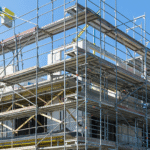Design-build construction is a recent method that helps simplify the construction. It has architectural and building services in a single contract. This method saves your time, cuts construction estimating costs, and augments teamwork. However, to reap all the benefits, you must know how it all works. This blog shows the main steps and measures that guarantee success.
Steps You Must Follow in Design-Build Construction
1. Making the Project Scope well-defined
Good “getting off the ground” starts with the understanding of what the project should entail. The aims, objectives, and needs should be drawn out before the commencement of work. This eliminates confusion and technically makes all team members head towards attaining the same goal.
Stated Activities ought to include:
- Building type and size
- Functional needs of the facility
- Timeline expectations
- Rules compliance needs
In design-build construction, scope alignment is essential for efficiency.
2. Understand the Financial Framework
The efficient management of building projects is based on cost planning. Even the well-organized projects can be waylaid by unexpected costs. It is foolproof to add a contingency fund to a budget. Unexpected planning makes one stable when difficulties are imminent.
3. Get Professional Help Involved Early
It is huge when we can get professional feedback at the initial stage. SMA Estimating LLC is an outstanding company that offers the best design-build methods. Their clear predictions prevent you from budget deficits and time overruns. The advanced teams understand the risks and do so before they manifest as problems.
4. Glide through Design Phase
Design-build approach flourishes when there is good coordination between designers and constructors. During this step, ideas are converted into workable strategies. All the design decisions have effects on both the cost and the construction project delivery. In order to make this phase an effective one, all stakeholders should be informed. Periodical meetings will confirm that the change will occur at an early stage and not at the expensive construction stage.
5. Obtaining the Correct Permits and Permission
Before any constructions are made, requisite approvals are to be taken. Permits establish a set of safety and legal compliance for your project. Lack of permits may cause late delivery or even closure of the projects. The nature of the kinds of permits that you are required should differ with the scope, location, and facility. Discuss with the local officials early in order to be aware of the requirements. This maintains the progress of the project without any hindrances.
"Give thanks to the Lord for He is good: His love endures forever."
6. Prepare the Site for Work
Site preparation begins the process; all other stages rely on it. Also involves removing debris, grading the site, and stabilizing the soil.
Before starting construction, important tasks to be accomplished include:
- Utility connections and relocations
- Soil testing and reinforcement
- Establishing access points for equipment
Proper preparation reduces structural risks and prevents costly rework later.
7. Manage Resources Effectively
The operations are also necessary for efficient management of resources. This entails planning labor, attaining materials, and the use of equipment. The application of tools of project management facilitates tracking provisions, personnel, and schedules. Digital platforms enhance harmony among teams and their suppliers on large projects.
8. Select the Appropriate Methods of Construction
The construction of various facilities needs varied construction techniques. Take an example like the pre-engineered steel frames suit large warehouses, whereas concrete structures are suited to the heavy-load environment.
The choice of the appropriate techniques affects:
- Project speed
- Material costs
- Durability
9. Keep Safety as a Priority
A strong safety plan should include:
- Personal protective equipment for all workers
- Regular safety training sessions
- Ongoing site reviews to spot hazards
10. Maintain Clarity
There are numerous moving parts of industrial and commercial projects. Differing and numerous parties, such as designers, builders, suppliers, and clients, require up-to-date information up to date. Progress reports and updates on a weekly basis keep everyone in line. Online teamwork tools help make communication much more effective, particularly in project groups that are spread out.
11. Apply Quality Check at Each Step
Quality assures your investment. Consistent checks guarantee the quality of work; adherence to the industry and the expectations of the client body.
The important quality control steps involve:
- Inspecting materials before installation
- Monitoring construction techniques for compliance
- Testing systems before handover
Quality management is easier when built into the project schedule from the start.
12. Integrate Technology for Better Efficiency
Advanced technology is common in modern project delivery in construction. Such tools as Building Information Modeling (BIM) assist in envisioning the project in 3D even prior to the beginning of construction. Sites can be surveyed using drones accurately and within a short period. Such innovations enhance precision, increase process speed, and they also decrease expensive mistakes.
13. Waste and Environmental Management Plan
Design-build construction brings about trash. Various materials are recyclable, and some materials should be disposed of separately. With a waste management strategy, there is less environmental impact and lower costs of disposing of waste. Recyclable material separation increases efficiency and sustainability.
14. Make Sure of Final Testing
The systems have to be tested before final handover. Electrical, plumbing, safety, and operational systems ought to work as desired. Final checks verify that the facility is in line with all requirements and is also ready to be used. The client should also be given documentation and maintenance guidelines.
15. Learn on a Project-to-Project Basis
Each construction provides teachings. A review of post-project outcomes assists with realizing what worked and what could be better. These experiences enhance operations, build the performance of the team, and the results of future projects are better.
Conclusion
Design-build construction is very fast and swift, and contains increased communication between groups. Nonetheless, success will not come without proper planning, managing resources, and detailing. When the scope is aptly clear, then the experience, safety, and quality aspects of the project are also achieved within the stipulated timeframe. It may be utilized in a warehouse, a production facility, or a business realm. Nevertheless, in all the cases, this method literary makes the project easy to implement at the bottom of the project.





